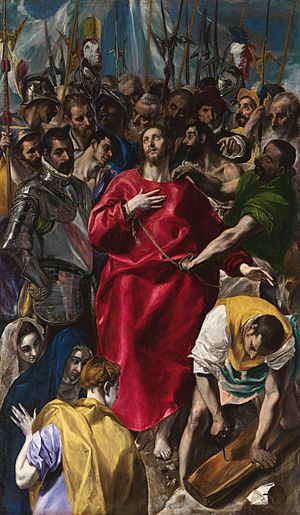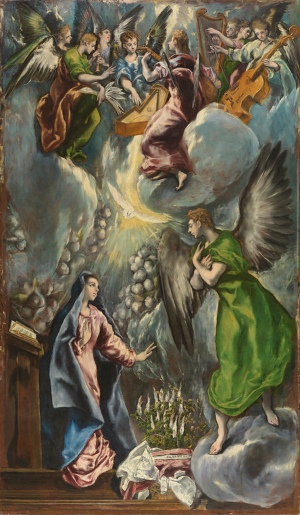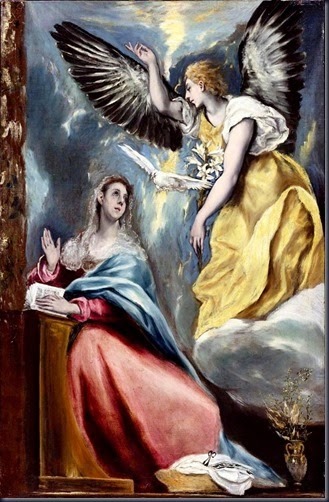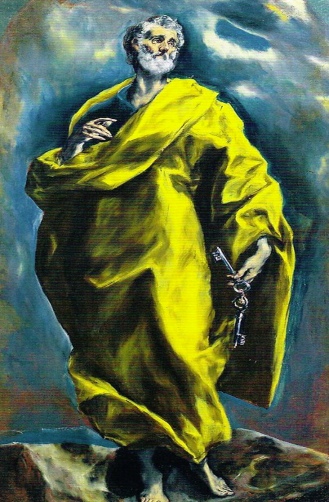The Precursor of Expressionism: El Greco
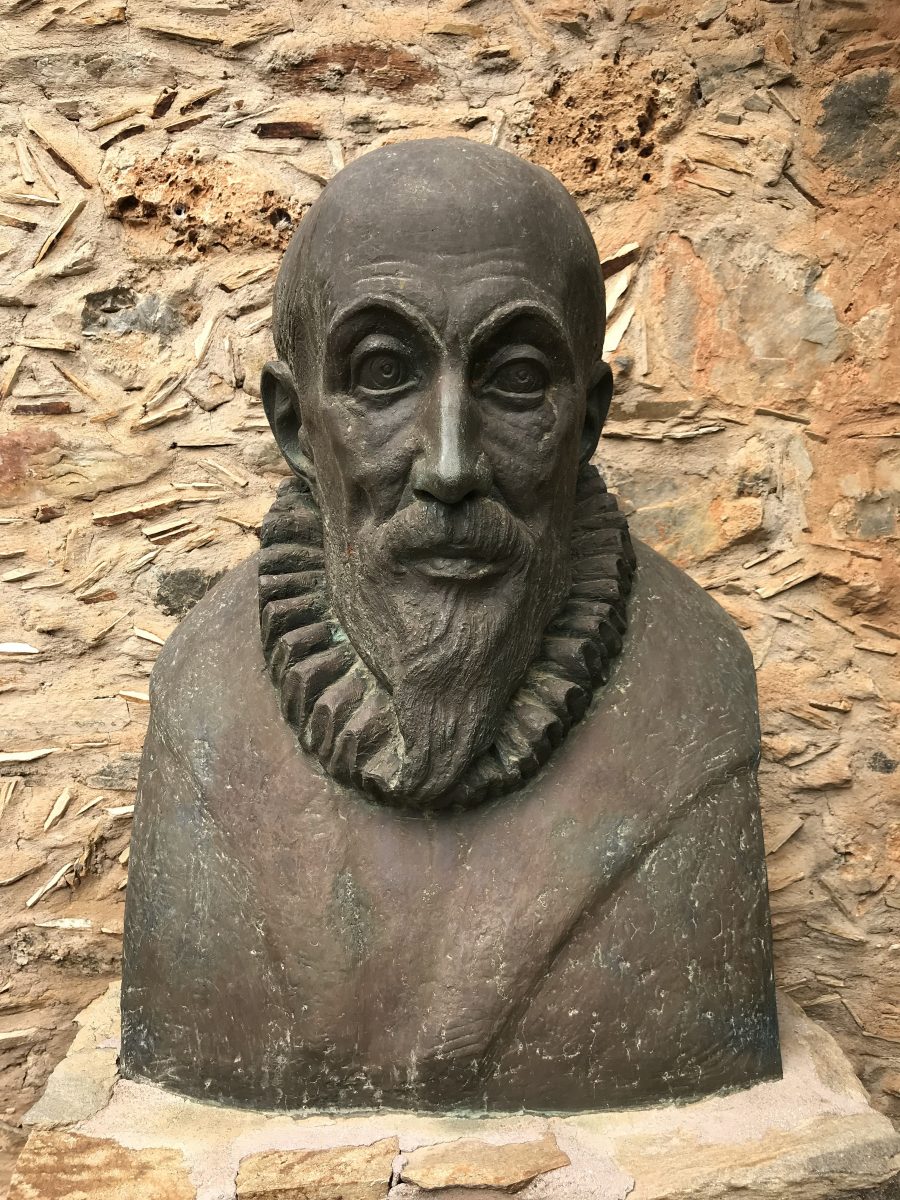
A biography on El Greco’s greatness. How coming from Crete, he became the leader of expressionists all over Europe.
Domenikos Theotokopoulos has been described by Pablo Picasso as “father” in painting. Some of the most important painters he has inspired are Diego Velasquez, Edouard Manet, and Paul Cézanne.
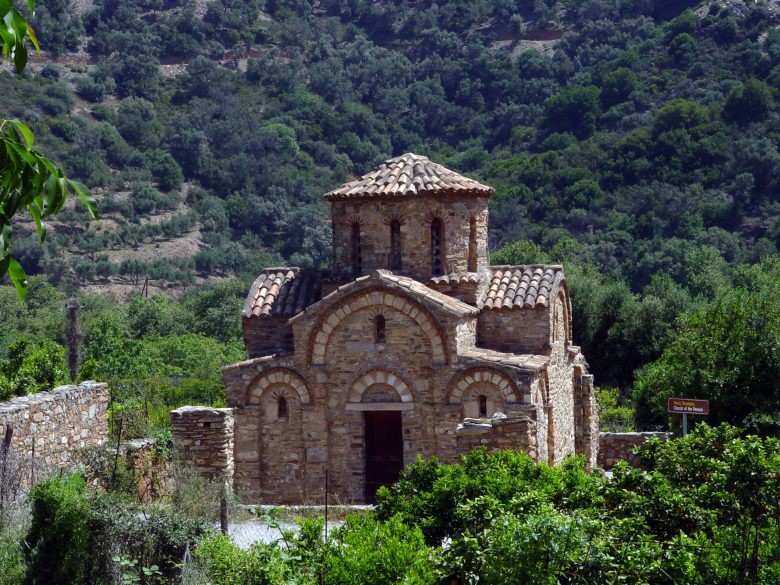
El Greco’s birthplace: Crete
El Greco’s real name was Dominikos Theotokopoulos. He was born in the village of Fodele in Chandakas, Crete, and studied all about Byzantine Art in the Monastery university school of St Catherine of Sinai in Candia (today’s Heraklion). He was taught by great masters of Byzantine and Renaissance influenced painting, who later developed the so-called “Cretan School of Painting“. His family was Orthodox. His father, George, was a tax collector in the service of the Republic of Venice, where Crete then belonged. Manolis was his brother, who was 10 years older than Dominikos, and as soon as their father died (1556), followed the same profession. The big brother was the breadwinner of the family. Dominikos lived in Crete until he was 26 years old. In 1567 he left for Venice where was the meeting place of Eastern and Western civilization. Dominic had already assimilated its culture and language since his childhood on the island.
At that time in Crete there were schools of basic and secondary education and the percentage of Cretans who knew how to read and write, was over 30%! Which is an impressive percentage for that time! Many of them continued their studies at the Universities of Pandova and Venice and returned to the island as doctors, lawyers, etc.
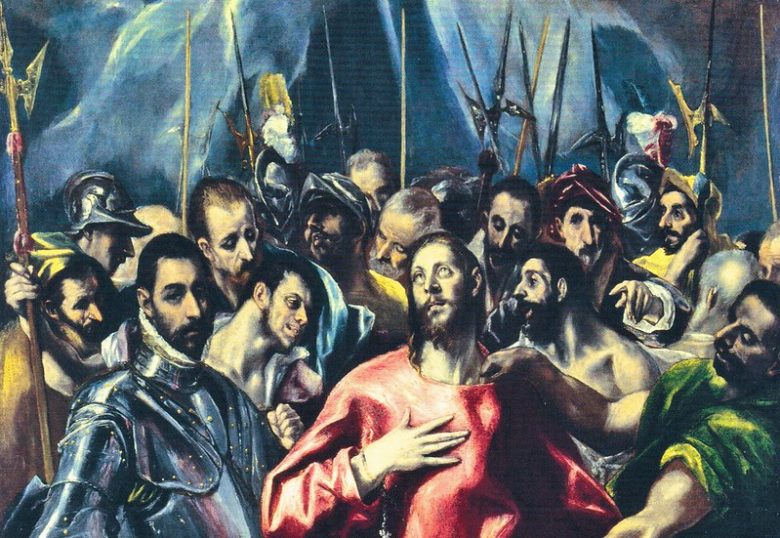
Cretan Renaissance
The mixture of Cretan and Venetian tradition led to the Cretan Renaissance. At that time, art was flourishing. There were many workshops, mainly hagiography, where their works went to wealthy individuals, merchants, nobles, and clergies. A guild called “Brotherhood of St. Luke” had over 150 artists. Some of them followed the path of the post-Byzantine tradition of Constantinople and others the Venetian style that had become known by painters such as Titian and Bellini. The works of these painters had become known in Crete from the copies, mainly as engravings, which were found in churches and monasteries, but also the villas of wealthy individuals along with works of Flemings. Among the Cretan painters, 2 styles stood out: Maniera Greca and Maniera Latina, with the result that they had such a good reputation all over Greece but also in Europe!
It was in this climate that Dominikos was formed, although we do not know where he learned. Others say, seeing his first works, that he apprenticed to Michael Damaskinos, others to Theofanis, and most to Georgios Klontzas. All of them were leading representatives of the post-Byzantine Cretan school.
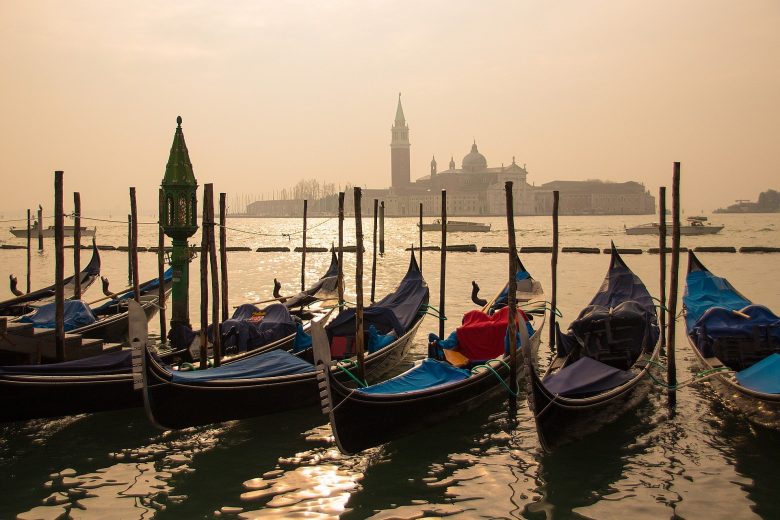
El Greco in Venice, Italy
Dominic was already married in Crete. However, in Venice, it is said that he did not take his wife with him for financial reasons. He embraced Catholicism so that he could work in Italy and avoid the persecution of the Inquisition. Meanwhile, due to a change in the dogma of his religion, his marriage may have been annulled because his Cretan wife is not mentioned anywhere as part of his life in the west.
At that time, it was customary for Cretan painters to go to Italy for information on the art and to search for new buyers. In fact, data from the time show that in 1550, more than 4,000 artists lived in Venice, from different countries. A truly shocking number!
To cover the expenses of his trip when he left Crete, Theotokopoulos put up for auction his work “The Passions of Christ”. We know that his older brother, had taken care of his trip and that Dominikos had already been accepted by the most famous workshop in Venice before he even went there. Therefore, he becomes a student of Titian. There is a letter from Titian to King Philip II of Spain that mentions him as “a remarkable new disciple” – (2/12/1567).
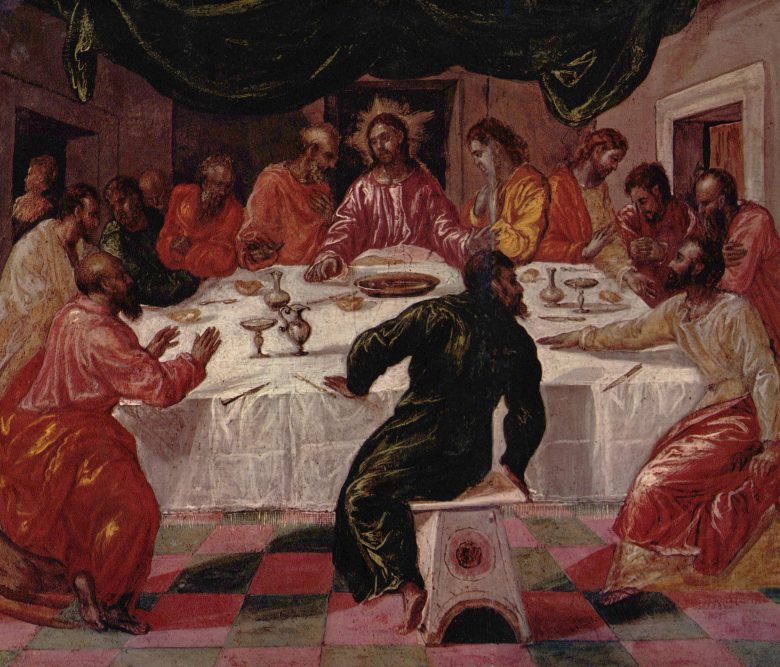
Early Work – Maniera Greca and Maniera Latina
At the age of 26, he painted with both Maniera Greca and Maniera Latina. He is fluent in the ancient Greek language, is fluent in Latin and Italian, and has a humanitarian education. From this period, we have only 10 works by El Greco. Everything is of a religious character and small in size: Like “The Last Supper” – (oil painting on wood, 51 X 0.43). Work with iconographic similarities of the Last Supper of Tintoretto in 1547 in the church of San Marcola and the church of St. Philip.
His other works are “St. Francis accepts the stigmas”, “The epitaph lament” – (tempera and oil on wood, 0.51 X 0.43) wherein this work, some figures (such as the man with the pink tunic and the white hair and beard) come from Titian and his lighting comes from Tintoretto. It is now clear that Dominikos has moved away from Byzantine standards. His interest now is in the performance of light and the western perspective. The greatest master of handling light, which makes figures bathe in light, was Titian. El Greco was apparently enchanted by his works, as well as by Tintoretto’s shadows, the religious scenes of Jacobo Bassano, and the works of the Flemings who emphasize detail.
Theotokopoulos becomes known as El Greco since it was difficult to pronounce his last name.
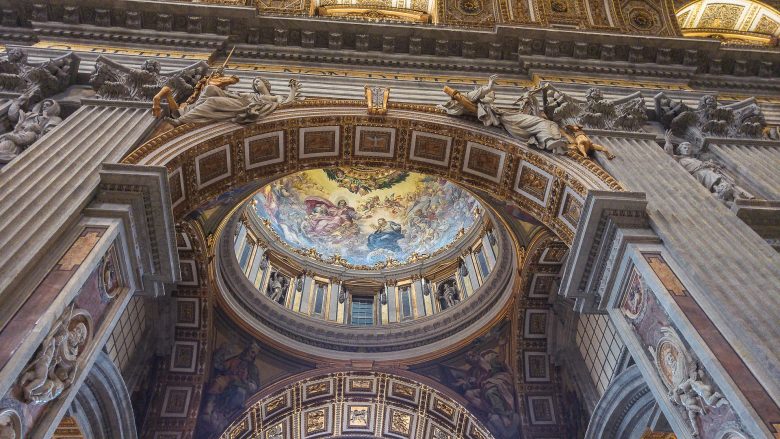
El Greco in Rome
In 1570 he would go to Rome for new opportunities in his art. He is acquainted with a person who knows very well the artistic circles of Rome. This is Ambassador Giovanni Soranzo. He is also assisted by Croatian-born miniature artist Julio Klovio, who is the bodyguard of the great cardinal Alessandro Farnese. In a letter, he asked the cardinal to host him for a while in his mansion, emphasizing that El Greco is “special in painting” and a portrait he had painted had impressed all painters. Clovio wrote the most special letter about Dominikos, insisting on his tenure with Titian and his ability in portraiture. Both would entice the cardinal. Farnese, in addition to his power through his position, had his whole family in key positions throughout Italy and had untold fortunes and wasted money.
Clovio received a positive answer and Theotokopoulos found himself in the artistic environment he wanted. At that time, he was painting the “Portrait of Julio Clovio”. He also paints the “View of Mount Sinai” which is now in the Museum of Heraklion, Crete.
In Rome, and with the protection of the Cardinal, Dominic has the opportunity to see all the relics, antiquities, and collections of works of art. One work that influenced him (as well as Michelangelo) was the statue of Laocoon. Sculpture dating from the 1st c. e.g., and was discovered in Rome in 1506. This sculpture will inspire him in many of his compositions. From the artistic circles of the time, he competed with the memory of Michelangelo, who attached great importance to sketching, while El Greco focused more on color and light.
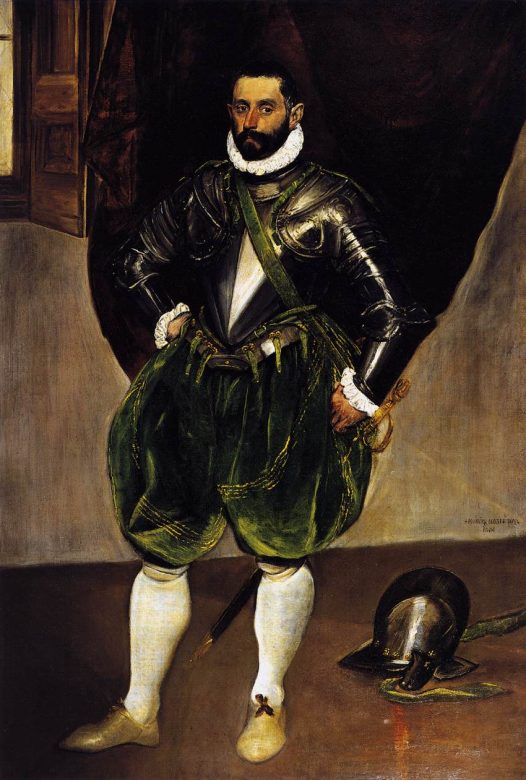
El Greco inspired by the Renaissance
Towards the end of 1572, Theotokopoulos opens his workshop with some assistants. Two of them are Francesco Prevoste who remained his partner until the end and Bonastri de Luciano. El Greco now assimilates more and more elements of the Renaissance, such as the organization of the space, the color tones, the details on the bodies, the faces, the clothes. Such as “Evangelism”. As for his portraits, he manages to deepen the personality of the person depicted, to the extent that you can study his psychology. Such as “Portrait of Charles de Guise, Cardinal of Lorraine” – 1572 (oil on canvas, 2.02 X 1.17, Zurich), or “The portrait of Vincenzo Anastagi”.
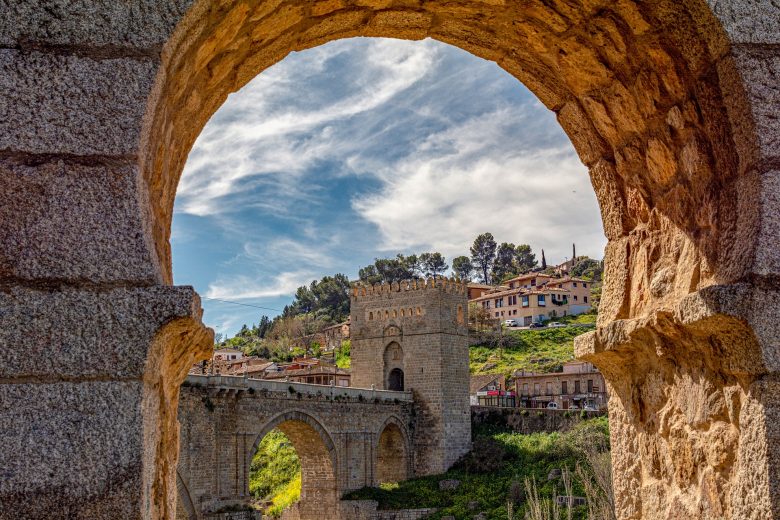
El Greco in Spain
1575 in Rome, and after 1 year in Venice, we have a plague epidemic. Maybe it was the cause or the occasion due to the intense hostility from many circles of intellectuals, and Dominic leaves Italy.
In October 1576, Theotokopoulos is in Spain. In Madrid, he seeks to work in the court of King Philip II and the construction of the Escorial. The king treats him coldly and Theotokopoulos stays on the margins of artistic life. Disappointed, he leaves Madrid and settles in Toledo. He would remain there until his death in 1614, i.e., 37 years later. His work will flourish there! He is the one who will inaugurate the “Golden Age” of the city, giving the baton to Velasquez and much later to Rivera and others. Toledo was an important cultural center at the time, but it did not have the power to make it stand out. The artists secured orders from the many monasteries that existed. Greco became acquainted with priests and monks and, thanks to his art, which was unrivaled in relation to other painters, undertook ambitious works. One of his first orders was compositions for 3 retables of the church of Ag. Domenikos of the Old.
El Greco’s Life in Toledo
In 1577 and 1579, he painted in the cathedral of Toledo “The division of the garments of Christ”. The figure of Christ looking to heaven is idealized and psychologically isolated from the crowd. His clients complained about the figure of the Virgin Mary being placed too low at the bottom of the table, but also about the crowd that was higher than Christ. But everything had its artistic explanation and contributed to the dynamics of the project. And the project was a great success. This painting transforms El Greco from a hagiographer to the greatest painter of European mannerism. Then, he undertakes the decoration of Ag. Bank in the same area.
Greco’s library was very rich with Greek, Spanish, and Italian books. He had works by ancient Greek writers: Homer, Isocrates, Hippocrates, Demosthenes, Xenophon, the Old and New Testaments, the Myths of Aesop, the Lives of Plutarch. He also had political and satirical books. Among the Italian writers, he had Petrarch and Ariosto. He had essays in painting, philosophy, medicine, and architecture. His favorite book was Virtuvius’ “10 Books of Architecture”, where he filled it all with his critical notes. We understand that he would discuss these issues with his friends, such as his beloved friend Antonio de Corarubia who knew Greek fluently, and his friend the theologian Hortensio Felix Paravicino, who remained his friend until the end.
Theotokopoulos from this period has an affair with a woman of a good family Jeronima de las Guevas and in 1578 they have a son named Jorge Manuel.
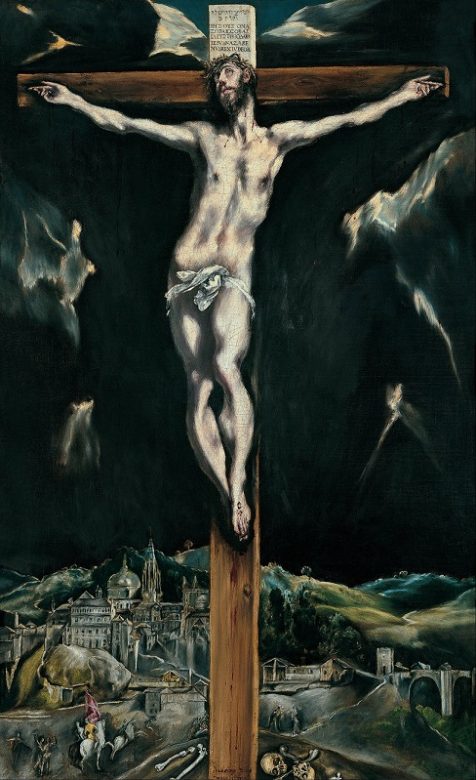
El Greco Finding Himself as an Artist
Along with the great works, he paints many portraits. His style becomes more dynamic but also more fluid, and this will be the beauty of his works from now on!
The demand for his works is maximum. His workshop is said to operate almost like an “industry”. Some works of this period are “Mary Magdalene”, “St. Petros” ,”St. Pavlos”, “Ag. Francis”, many versions with “St. Veronica with the Holy Scarf”, etc. A special topic that was in great demand was the “Crucifixion”. Thus, we have from Greco the “Crucified with 2 donors” – (1580, oil painting on canvas, 2.60 X 1.78). Today the work is in the Louvre Museum, Paris. The portraits that stand out then, are “The portrait of Eupatridis of his house of Leiva”, “Eupatridis with his hand on his chest”.
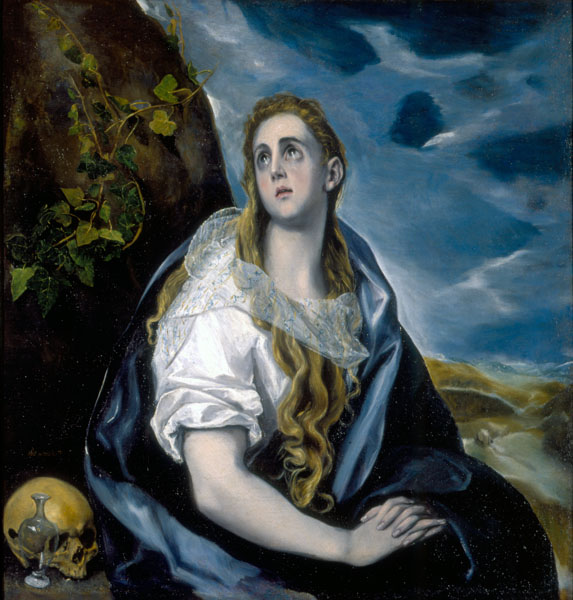
El Greco the Expressionist
From 1592-1595 is a period when Greco paints less and less realistically. His touches are now even more fluid, the forms more faded, longer, thinner, bony, more dramatic with lyricism. His works of these years are “St. Martin and the beggar”,” The Virgin Mary with the divine infant with St. Martina and St. Agni”,” Prayer in the garden of Gethsemane”, “Christ removes the cross “in many versions”, “The Crucified”, “St. Veronica”, “Many saints in a prayer position”, “St. Family with Ag. Anna”, “The Repentant Magdalene” etc.
Theotokopoulos loved Toledo. It was impossible not to paint it. Some observe that he painted it quite “expressionistically”. Around 1610-1614 he painted “Laokoon”. A project he did not want to sell but had at home. (Oil painting on canvas, 1.37 X 1.72) In the work, Toledo can be seen in the background.
In 1604 his grandson, Gabriel, was born. The governor of Toledo who was a personal friend of Dominikos, becomes the godfather of the child. At that time, he learns unpleasant news: “Our Lady of Mercy” in the hospital of Ijescos is replaced because they find her inappropriate! If we observe works by Dominikos, we see that he moved in many ways on works by Michelangelo who translated them into his images. For example, “The expulsion of merchants from the temple” with nudes reminiscent of Michelangelo.
El Greco’s Final Years
Typical works of Dominic in the late 16th and early 17th centuries were the “Apostolados”. That is tables with an apostle in each, which also bear a characteristic symbol. Then in 1613, he painted for the small chapel of Isabel de Oballe the “Assumption of the Virgin” and “The visit of the Virgin to Elizabeth”.
His last great work was from his friend and manager of the hospital Pedro Salazar de Mondoza, “The Baptism of Christ” – (3.20 X 2.11), “Evangelism”, “The vision of John”. Work culminating in expressionism. More and more abstract! However, he did not manage to finish. Dominikos Theotokopoulos, died in 1614 at the age of 73.
As early as 1612, Manuel’s son rented a crypt in the church of St. Dominic of Antigua to become the grave of his father and himself. Father and son choose the theme “The Adoration of the Shepherds” – (3.20 X 1.80, oil on canvas). It was their favorite subject and Dominic had painted it 7 more times. Greco worked on this project until the day of his death: April 7, 1614.
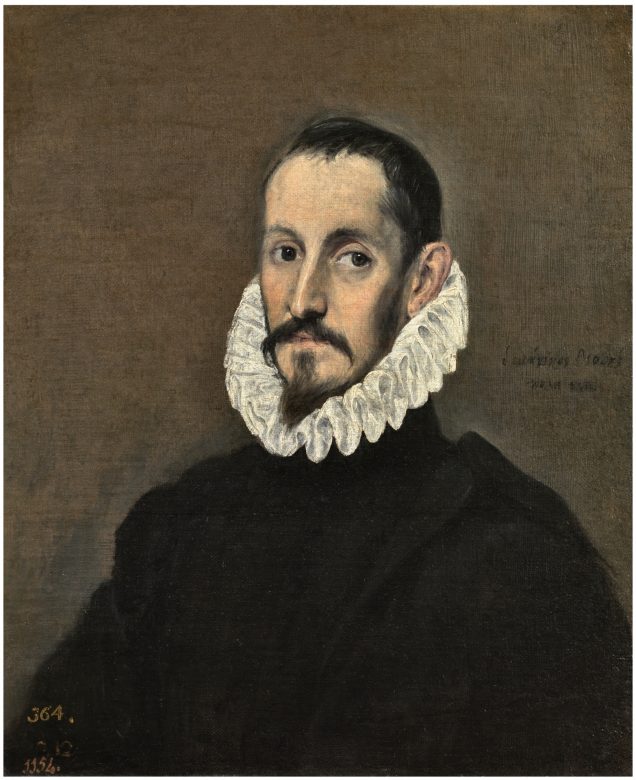
The Praise of El Greco in Recent Times
Theotokopoulos remained forgotten. He was “discovered” again in the 19th century. Studies have presented him as an eccentric but expressive of the Spanish soul and a forerunner of Velasquez. Then came Clovio’s letter of recommendation to Cardinal Farnese. Then other studies characterize him as a “painter with a Byzantine heart and Italian education”. His fame spread all over the world. From 1902, large exhibitions of his works follow and books are dedicated to him. His works were around 800. Other studies say about 137 handicrafts, others about 285.

